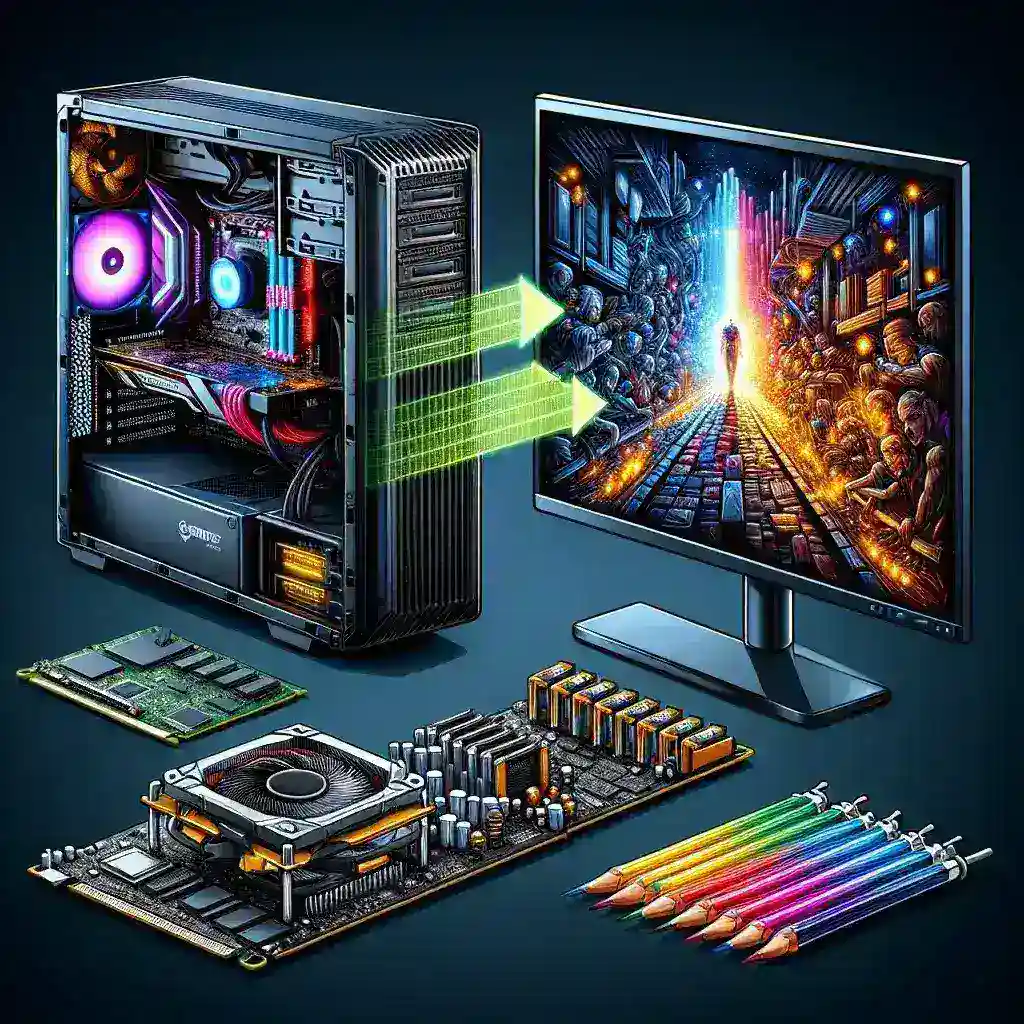Dynamic resolution scaling (DRS) is a crucial technology in the gaming world, enabling a balanced blend of high visual fidelity and smooth gameplay. By dynamically adjusting the resolution, gaming PCs can maintain a stable frame rate and avoid performance dips, especially during graphically intense scenes. Let’s delve deeper into how gaming PCs handle dynamic resolution scaling.
What is Dynamic Resolution Scaling?
At its core, dynamic resolution scaling alters the resolution of the game on-the-fly to balance performance. When the gaming load is light, it outputs at higher resolutions for better visual quality. Conversely, during intense scenes, it scales down the resolution to ensure the frame rate remains stable.
Benefits of Dynamic Resolution Scaling
- Improved Performance: By decreasing the resolution during heavy workloads, DRS helps maintain a higher frame rate.
- Consistent Frame Rate: Prevents large frame rate drops that can disrupt gaming experience.
- Efficient Resource Utilization: Allocates system resources where they’re needed most.
- Enhanced Visual Quality: When the load is lower, the resolution scales up for better graphics.
How DRS Works on Gaming PCs
Gaming PCs comprise various components, and each plays a role in handling DRS:
1. Graphics Processing Unit (GPU)
The GPU is the primary component responsible for rendering visuals. Modern GPUs come with embedded support for DRS technology. The GPU monitors the game’s performance metrics, such as frame rate and workload, and accordingly adjusts the resolution.
2. Central Processing Unit (CPU)
While the GPU handles most of the rendering, the CPU supports by ensuring that the information flow remains optimal. A well-synchronized CPU-GPU relationship is essential for effective DRS functionality.
3. Game Engine
The game engine scripts and manages how DRS behaves. Developers often embed DRS-related algorithms to notify the hardware when to scale up or down the resolution.
4. Drivers and Firmware
Latest drivers and firmware often include optimizations for DRS. Regular updates ensure that the GPU and CPU can efficiently manage dynamic resolution scaling.
Performance Metrics
The effectiveness of DRS can be gauged using performance metrics. Below is a comparison table illustrating how dynamic resolution scaling affects gaming performance:
| Scenario | Resolution | Frame Rate (FPS) | Performance Impact |
|---|---|---|---|
| High Load – Without DRS | 4K | 30 FPS | Significant frame drops, choppy gameplay |
| High Load – With DRS | 1080p | 60 FPS | Smooth gameplay, stable frame rate |
| Low Load – Without DRS | 1080p | 75 FPS | High visuals but lower frame rate |
| Low Load – With DRS | 4K | 75 FPS | Enhanced visuals, smooth gameplay |
Future Trends in DRS Technology
With gaming technology evolving, DRS too has seen significant advancements:
1. Machine Learning and AI
Future DRS implementations are leveraging machine learning to predict performance and adjust resolution even more efficiently.
2. Enhanced Game Engines
Next-gen game engines are being designed with advanced DRS capabilities, allowing for more nuanced and precise adjustments.
3. Hardware Evolution
Modern GPUs come with dedicated hardware for real-time scaling, making DRS more seamless.
Conclusion
Dynamic resolution scaling is a powerful technological solution that ensures gaming PCs deliver optimal performance without compromising visual quality. As technologies advance, we can only expect DRS to become even more integral in providing the ultimate gaming experience.

